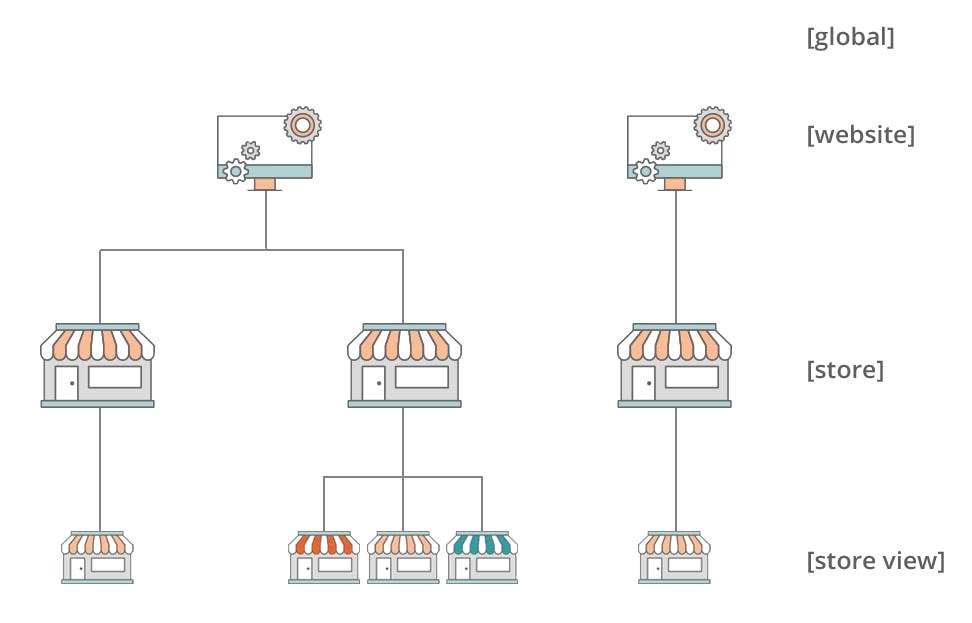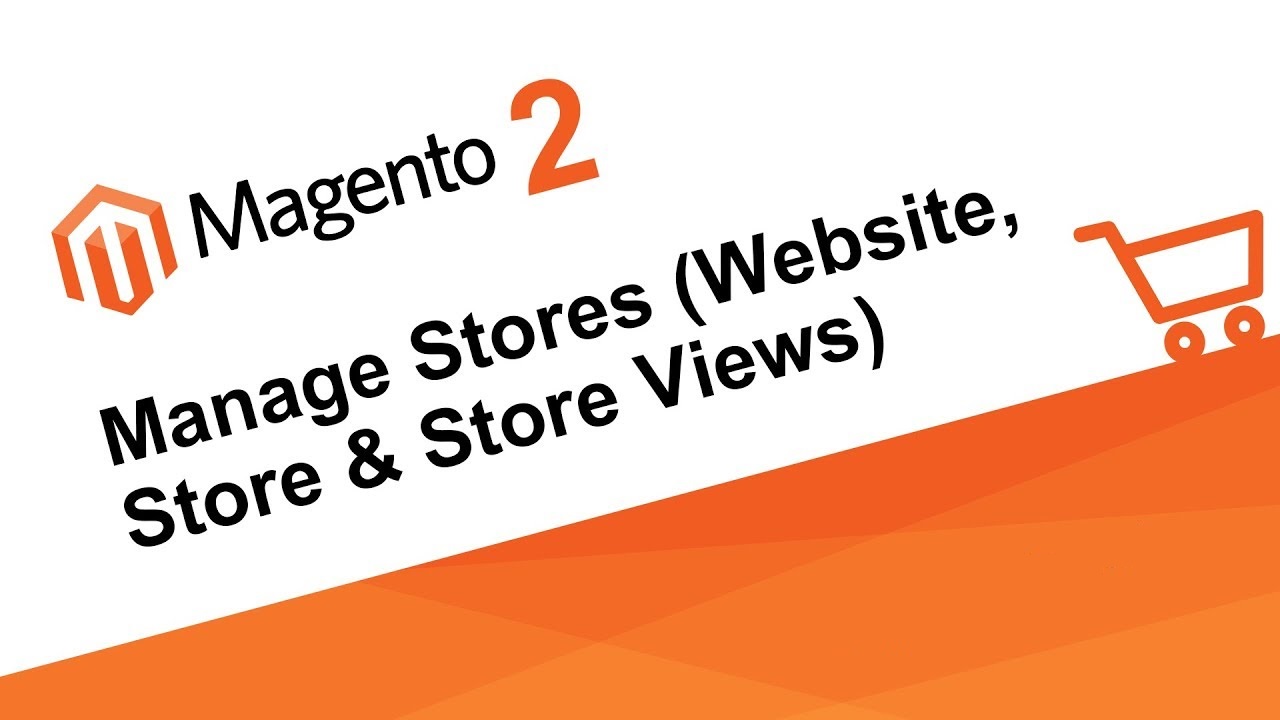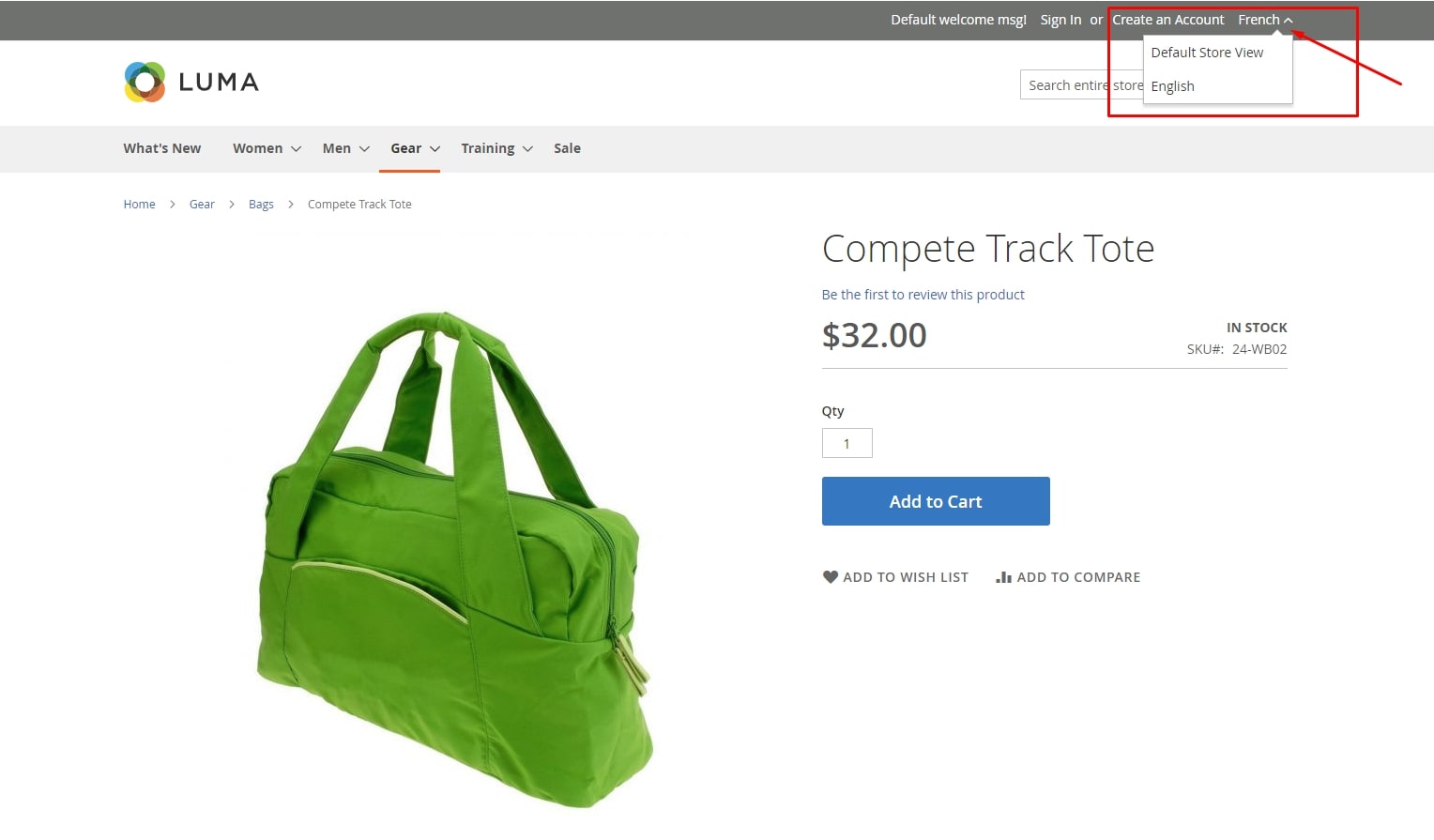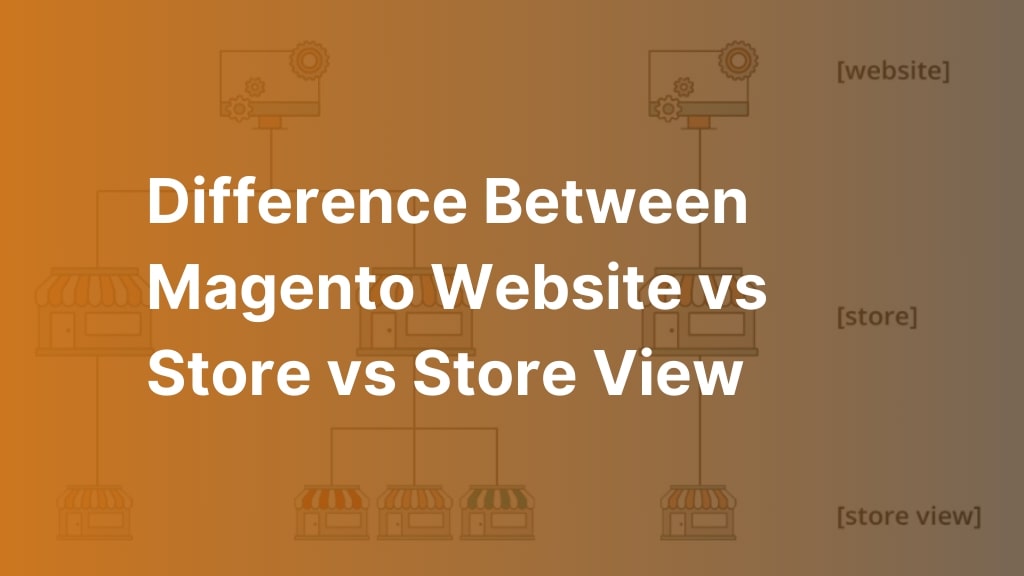Magento Commerce and Magento Open-source have a hierarchical structure consisting of four levels: global, website, store, and store view. Therefore, understanding the backend of Magento can be quite perplexing for online store owners. Differentiating between them and knowing how to set up your backend can be confusing.
In this article, BSS Commerce will delve deeper into the Magento website, store, and store view to explore their similarities and differences. At the same time, we also provide common use cases to help Magento store owners grasp the concept easily. Now, let us delve into Magento Website vs Store vs Store View, as below:
Magento Website Vs Store Vs Store View: A Quick Overview
Table of Contents
Magento provides the opportunity to manage multiple websites and stores within a single installation efficiently. Each website can have multiple stores and store views in Magento 2. This hierarchical structure is often represented as a pyramid, which can appear complex at times.
As a Magento owner, you can categorize this hierarchy into multiple systems, enabling the creation of multiple websites under one Magento installation. Each website consists of various Magento stores, and each store can be further divided into multiple store views, each catering to different languages.
And this is a hierarchical structure, represented as a pyramid, that you can consult below:

You can see that the Magento website vs store vs store view are hierarchically connected. Any modifications made by the parent will have an impact on their children.
The hierarchical structure is crucial for setting content elements and impacts backend operations (such as payment methods and shipping) and database management (like product details and categories). These settings are determined by the hierarchy’s operational scope. This setup enables businesses to provide a more personalized shopping experience, catering to the diverse needs of their customer base.
Now, let us delve into the Magento 2 difference between store and website and store view:
Magento Website Vs Store Vs Store View: Main Differences

#1. Global
At the pinnacle of the Magento hierarchy is the Global level, which is unique in that it remains constant with only one global view. Unlike the lower levels, it is not possible to duplicate the Global level.
TAKE NOTE: For new Magento websites, it is required to define the default settings for the global view during the configuration process.
The Global level includes three essential settings:
1. Stock: Used to set up the main product configurations.
2. Price: Used to ensure consistent product pricing across all stores.
3. Buyers: Used to consolidate customer information into a unified website database.
Modifications made at the global level will affect the entire Magento installation.
#2. Website
To comprehend the difference between the Magento website vs store vs store view, it’s crucial first to define the concept of a website within the Magento framework.
In Magento 2, the website is a subset of the global network and allows for the creation of multiple websites as needed. Upon installing Magento, the system initially provides a single website known as the main website. However, it is possible to establish multiple websites within a single installation, each with its own IP address and domain. This feature is particularly useful for store owners who sell different types of products and require separate Magento websites.

For instance, let’s consider the websites pens.com and pencil.com. With this setup, it becomes possible to configure distinct payment and shipping methods, set different prices, and cater to diverse customer bases. Additionally, multiple stores can be created for each website, providing further flexibility. The Magento 2 admin panel allows store owners to easily manage all their websites, including the ability to customize designs, layouts, and other website elements.
Best uses case
If you belong to any of the following categories, it is advisable to create multiple websites in your Magento backend.
- You have various brands with unique domain addresses
- You cater to different customer groups (e.g. B2B and B2C) and need to segregate them for data collection and marketing enhancement
- You offer different types of products (e.g. seed milk and fashion) and it is essential to have distinct payment methods (e.g. subscription and one-click checkout) and/or delivery options for them
- You operate on an international scale. By having multiple websites, you can optimize shipment methods, payment methods, base currency, and tax classes to cater to customers from specific countries
What are the Magento “website” configuration options?
In contrast to the global scope, the website view does not have the capability to modify stock options. This results in all websites having the same inventory and inventory configurations.
On the other hand, the website scope provides the ability to customize more specific settings compared to its parent, the global scope. This includes setting up distinct payment and shipping methods for each website.
Let us delve deeper into the shared and separable features of all websites:
| Shared features | Separable features |
|
|
Notably, the website scope allows Magento merchants to easily create and gather information from diverse customer bases.
Furthermore, making configurations within the website scope allows you to apply these settings to all stores and store views below it in the hierarchy simultaneously. For instance, you can establish identical prices for all stores associated with a website at once.
Benefits of Having Multiple Websites
- Data sharing among websites.
- Administration of separate customer bases for each website
- Supervision of orders, reports, and checkout settings
- Independent inventory management for each website
- Administration of separate shopping carts
The consolidation of data and management in a single dashboard through the management of multiple websites streamlines business expansion.
#3. Store
Magento offers users the ability to create and manage multiple stores within one website. This feature is particularly beneficial for businesses that sell a variety of products and require efficient category management. Each store can have its own unique main menu, allowing for customization in terms of product offerings and design. Despite these differences, all stores under the same website share the same administrative and checkout functionalities, streamlining the overall management process.
TAKE NOTE: Any modifications made to one store will impact all of your other stores.
Best uses case
Highly effective for businesses with diverse product offerings, allowing for customized catalog displays based on product types and designs.
What are the Magento “store” configuration options?
You can allocate different products to different stores and choose to import a single product to multiple stores, but it is important to note that the price of that product must remain consistent across all stores. Any modifications made to the price in one store will automatically be reflected in the price of the same product in the other store under the same website parent.
When it comes to the sibling stores of a website parent, there are certain aspects that they have in common and others that set them apart:
| Shared features | Separable features |
|
|
Benefits of Having Multiple Stores
- Efficient product management using a unified admin panel
- Ability to cater to a wide range of product categories
- Customizable features for check-in, checkout, and adding items to the cart
- Simple setup and maintenance of multiple stores
>>> If you are new to Magento 2, let’s continue reading with this Magento tutorial for beginners
Difference between Magento Multiple Websites Vs. Multiple Stores
Many Magento merchants often have different types of products and may want to separate them for easier navigation. This can be achieved through either multi-website or multi-store functionality. However, it can be confusing to decide whether to add a new website or a new store.
The choice between multiple websites and multiple stores depends on which features better suit your business needs.
One major advantage of using multiple stores instead of multiple websites is that all your products can be displayed under the same domain.
This is because each website typically requires a base URL, which means that customers would have to navigate to a different site when they want to browse a different product type.
However, it’s important to note that you won’t be able to customize certain aspects such as price, tax class, payment, and shipping methods for each individual store. If you require specific customization for these features, it would be more appropriate to create multiple websites.
| Multiple websites | Multiple stores |
| You are UNABLE to customize prices, taxes, payments, and delivery options for individual websites. | You are ABLE to customize prices, taxes, payment methods, and shipping options for individual stores. |
| It can be constructed using a Single domain. | It requires different domain names. |
| You are limited to focusing on the same customer group. | It enables you to focus on different customer groups. |
#4. Store View
To complete our comprehension of the Magento website vs store vs store view distinctions, let’s explore the concept of a store view. Every store possesses a unique perspective that is referred to as a store view, which serves as the ultimate level in the Magento hierarchy.
Store views are designed to cater to specific audiences by providing multiple languages and currencies. The primary purpose of a store view is to translate information and configure currency symbols. Moreover, it allows for the customization of labels, texts, and templates across all store views.

While the product categories remain the same, each view allows for the setting of different prices. By default, every store has a single default view. However, additional store views can be added to accommodate different languages or serve other specific purposes.
Best uses case
- #1. Show various languages and currencies
- #2. Showcase diverse primary menus
- #3. Use distinct theme designs for every store view
What are the Magento “store view” configuration options?
| Shared Features | Unsharable Features |
| All the information shared within the scope of their grandparent website, as well as everything shared within the scope of their parent store, encompasses the root category and its associated products. |
|
Product information is established in the global view, but certain attributes of the product, such as tax classes and names, can be customized specifically for the store view.
Benefits of Having Multiple Store Views
- Different store views offer various options for setting prices for the same products
- Enhanced sales potential
- Enhanced shopping experience with language support
- Flexible customization of category attributes
Reliable Extension to Set up Magento 2 Multiple Store View Pricing
If you are seeking a reliable and reputable Magento 2 extension to set up various price types for the same product in each store, Magento 2 Multiple Store View Pricing is a great option. It offers the ideal solution for administrators who oversee multiple store views and need to manage various aspects. This module enables sellers to establish distinct prices for the same product on each store view within the Magento store. Additionally, it facilitates the effortless configuration of the base currency for each store view.
- Rating: 4.8/5

Key Features of Magento 2 Multiple Store View Pricing include:
- Setting up different prices for each store view in Magento 2
- Streamlined checkout process with the base currency of the respective store view
- Ability to select the base currency for each store view
- Support for Restful API and GraphQL API
- Compatibility with M2.4.5 and M2.4.6 versions
Why Should Choose BSS Commerce’s Magento 2 Multiple Store View Pricing?
- Free lifetime update
- Free one-year support
- Free installation
- 30 days of money back
- One-time payment
>>> Here is a complete guide to installing a Magento extension that you want to know: Install Extension Magento 2 Clearly: A Step-by-Step Guide
Bottom Line
To put it simply, Magento 2 enables the operation of multiple websites, stores, and store views within a single admin panel. Businesses must grasp the fundamental distinctions among them to maximize their advantages.
To sum up, here are the key takeaways to assist you in quickly returning to your original configuration:
1. The Magento website vs store vs store view are interconnected in a hierarchical structure, where the website holds the highest level of scope and the store view represents the lowest level of scope. Any modifications made at the parent level will have an impact on its child scope.
2. Multiple websites have the flexibility to offer distinct prices, payment methods, shipping methods, tax classes, and base currencies.
3. Multiple stores can showcase different products and categories, allowing for customization based on specific requirements.
4. Multiple store views can cater to diverse languages, currencies, and themes, providing a personalized experience for users.
BSS Commerce hopes that this post has clearly explained the Magento website vs store vs store view. Don’t miss out on any posts on our site to gain the latest news and knowledge about Magento comparison, Magento tips and tutorials, and more.
As the official partner of Magento, BSSCommerce’s experts always seek the best solution to build or customize Magento stores in the most efficient way. If you are struggling with the initial stage of building a Magento store or looking for ways to enhancing your store functionalities, our Magento 2 development service offers access to top-class expertise. Reach out to BSS Commerce today for assistance from our top-notch experts!


